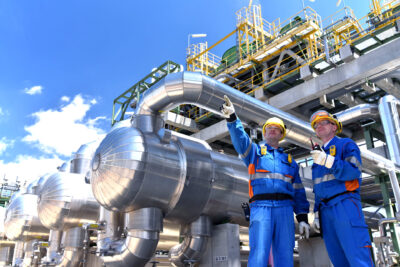Kemianteollisuuden lausunto EU:n energiajärjestelmän integraation konsultaatioprosessiin (ENG)
1 European Commission roadmap – strategy for energy system integration
The European Union aims at being a climate neutral continent by 2050. Finland has an ambition to be a forerunner in the EU and has a target of levelizing greenhouse gas emission and carbon sinks to reach climate neutrality by 2035. The Finnish chemical industry has embraced the national challenge and is now investigating how climate neutrality could be reached as an industry sector by 2045.
From the chemical industry point of view, climate neutrality will be achieved by reducing greenhouse gas emissions from processes (scope 1), from the use of energy (scope 2) and by reducing fossil carbon in materials by using new raw materials (scope 3). Sector integration creates opportunities, that can have an impact on all these greenhouse gas emission sources, especially on energy use and utilizing new raw materials. In the future, energy efficiency will not be enough, future efficiency will build around optimizing the use of molecules, electrons and digital bits. In this, sector integration can work as a guiding philosophy.
The chemical industry opportunities in sector integration can be approached from three different angles.
1.1 Energy
The chemical industry needs a lot of energy to be able to refine feedstock into the materials that are highly important for contemporary societies. In the future, the energy need will grow substantially, and it is of essence that the energy is securely distributed, emission free and price competitive on a global level. Electrification of industry is key for moving away from fossil fuels and accomplishing large greenhouse gas emissions reductions. The rapid development of the energy system, and especially incorporating large amounts of renewable energy sources, presents challenges to the chemical sector, but also opportunities. A growing amount of renewable energy will emphasize the need for predictable and reliable energy and for a stable and strong electricity grid to distribute the electricity. Energy storage and demand flexibility will also be important components in a future energy system. This opens opportunities for the chemical industry.
In the chemical industry, many different substances are used both as energy and feedstock. These substances can also be used to store and transport energy. To get the full synergies from this means sector integration and deep cooperation between the chemical industry and the energy sector.
In the chemical industry processes, large amounts of heat is generated. This can be captured and utilized on site, distributed in industrial clusters or in the society in district heating systems. New flexible technologies like power-to-x create also possibilities regarding demand response.
An example regarding energy integration: https://www.neste.com/releases-and-news/renewable-solutions/neste-borealis-and-energy-companies-helsinki-metropolitan-region-study-heat-recovery-two-industrial
1.2 Feedstock
One way to mitigate greenhouse gas emissions is to gradually replace fossil feedstock with alternative options. This will open new interesting possibilities from a sector integration point of view. The hydrogen economy will be particularly important, because hydrogen in combination with carbon capture technologies or biobased gases and liquids, make it possible to manufacture basic chemicals high up in the chemical industry value chain, eg. hydrocarbons, from other sources than oil. Materials are not dependent on the origin of the feedstock, they can be made from basically any hydrocarbon source. Green hydrogen based, biobased and circular materials can all be utilized as new feedstock origins. In the future, chemical industry companies need to be prepared to utilize many different raw material streams, which creates a challenge for the quality of the feedstock. Utilizing new feedstock requires a lot of emission free electricity but also new technology to refine the feedstock. There are many risks linked to the new technologies that make sector integration possible and many of these are still in an early development phase. Different financing instruments that aim at developing and scaling these technologies, like piloting and demonstration, are thus important to speed up sector integration.
Flexibility will be the key word of the future, both regarding the use of energy and feedstock. Critical technologies to speed up the feedstock revolution are green hydrogen production (eg. electrolysis), carbon capture, utilization and storage (CCS and CCU), and different recycling technologies like chemical and mechanical recycling.
An example regarding feedstock integration: https://www.lut.fi/web/en/-/feasibility-study-on-synthetic-fuels-pilot-plant-in-joutseno-started
1.3 End products
Sector integration also presents opportunities for the collaboration between the chemical industry and its customer sectors. Different technologies and solutions regarding logistics and buildings are emphasized, since molecules can be used to both store and transport energy. Manufacturing of alternative low-carbon fuels (eg. synthetic, biobased or circular) and the utilization of waste heat will reduce chemical industry customers greenhouse gas emissions significantly. In this way the chemical industry can grow its handprint and enable large emissions reductions, not just in the chemical sector or the industry, but also in hard to abate customer sectors.
An example of final product integration: https://www.st1.com/q-power-and-st1-piloting-synthetic-fuel-production-from-biorefinery-carbon-dioxide
1.4 Other aspects
Sector integration from the chemical industry point of view is linked to new kind of collaboration with new partners. The challenge with sector integration is to design large systems that cover large entities, industrial clusters or even complete value chains and ecosystems. New ways of working and collaborating needs to be developed, collaboration where all parties can benefit. A deep sector integration requires also coordination between different stakeholders, that do not traditionally collaborate. True integration, means efficient flows of molecules, electrons and digital bits between stakeholders, the temporary storage of these and converting them into different intermediate of final products or services. This present challenges in data management, ownership of processes and feedstock and reaching win-win synergies between different stakeholders.
From the viewpoint of competitiveness, it is crucial to evaluate the effect of this new system-level-optimization on both chemical industry companies and their customer sectors. There are several open questions linked to sector integration, eg. the availability and cost of gas and electricity, cross-industrial collaboration, the maturity of process innovations, electrification, carbon capture and utilization and possible constraints of technological innovations. Furthermore, a question of relevance is also, how will the emission reduction accomplished by integrating sectors be calculated, who is the beneficiary? In sector integration the sector borders are diminished. This requires new ways of thinking also from policy makers.
Enablers of chemical industry sector integration:
- The safe and secure distribution of emission free electricity that is cost competitive globally
- The availability and cost competitiveness of alternative feedstock, especially synthetic (emission free electricity based), renewable and circular feedstock
- Building of robust electricity-, gas-, logistics- and circular economy infrastructure
- Financing of pilots and demonstration projects for technology for sector integration
- Developing enabling policies
- Clear rules for carbon accounting between sectors
Respectfully,
The Chemical Industry Federation of Finland
Rasmus Pinomaa
Senior Advisor, Energy & Climate



